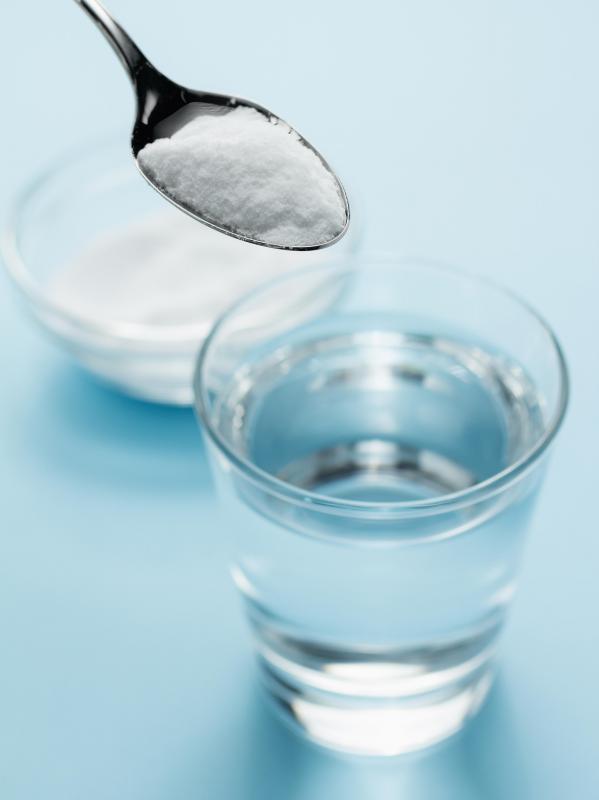At TheHealthBoard, we're committed to delivering accurate, trustworthy information. Our expert-authored content is rigorously fact-checked and sourced from credible authorities. Discover how we uphold the highest standards in providing you with reliable knowledge.
What Are the Different Types of Emetics?
Emetics are substances that cause vomiting when they are ingested. Anti-emetics are used to prevent vomiting. In medicine, they can be used to treat patients who have swallowed poisonous or toxic substances. There are two main types: those that work directly on the gastrointestinal tract and those that work indirectly by stimulating the areas of the brain that control vomiting. In most cases activated charcoal is recommended instead of emetic substances. It is important to contact a poison hot-line before administering any poison treatment.
Common emetics that act directly on the stomach include ipecac, copper sulfate, and large quantities of warm salt water. Ipecac, sometimes called syrup of ipecac, is the most commonly used of these. It can be bought without a prescription and can be used by most people older than six months of age. Though ipecac is usually the safest way to induce vomiting, it should not be used by anyone who is drowsy or unconscious or by those who have heart conditions or are in the third trimester of pregnancy.

Adults usually need between 15 and 30 milliliters (mL) of ipecac along with one or two glasses of water. This will normally induce vomiting within twenty minutes. The vomiting can last up to two hours. If vomiting does not occur within thirty minutes a second dose may be required.
Systemic emetics are those that work to stimulate the parts of the brain that cause vomiting. The most common of these is apomorphine. It is no longer used to treat humans but may be used in veterinary medicine to induce vomiting in pets that have ingested poisonous or toxic substances.

The drawback of emetics is that they cause the harmful substance to travel back up through the stomach and esophagus, re-exposing them to the substance. In cases when poisoning has been caused by strong acids or petroleum distillates like kerosene, vomiting these substances can cause even more damage to sensitive tissues. For this reason, activated charcoal is often used as a substitute for emetic substances.

Activated charcoal prevents the blood from absorbing the swallowed poison. Similarly, it can be used to treat people who have suffered a drug overdose by preventing absorption of the drug. It is not effective against all poisonous substances, however. For example, people suffering from alcohol, gasoline, or iron poisoning will not be helped by activated charcoal.

Treatment of a suspected poisoning should be guided by a medical professional. In many countries there are national poison hot-lines that can be called for free to obtain such guidance. It is important to save any medications, food, drink, or other substances that may have been ingested to aid medical professionals in identifying the poison.
AS FEATURED ON:
AS FEATURED ON:














Discussion Comments
I don't think inducing vomiting is as common as it used to be. I know activated charcoal is a common remedy, since it absorbs the toxins in the stomach.
I knew this guy who got alcohol poisoning. His girlfriend found him passed out in front of his frat house. She took him to the hospital, and they ended up pumping his stomach, but they gave him charcoal to absorb as much of the alcohol as they could before they did the pumping. He was lucky. He was turning blue by the time they got to the ER. The doctor said if they had waited another 30 minutes, he would have been gone.
I swear: just reading this article was about enough to induce vomiting all by itself. But I guess I have a sensitive gag reflex. I'm also kind of squeamish anyway.
I've also heard just the taste of syrup of ipecac can induce vomiting in someone who is already a little queasy. This doesn't surprise me. I've smelled the stuff. It's excessively nasty.
I think the standard procedure when you think someone has ingested something toxic is to call 911, or at least the Poison Control Center. At any rate, you should be able to tell the EMTs what the person might have ingested.
Post your comments